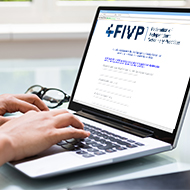Vet nurses ask "Where do we see the profession in 2025?"

Sam Morgan, BVNA president, explained the origins of the VN Futures Project.
"Vet nursing is developing at a hell of a pace!" announced Alison Heywood, RVN, director of veterinary nursing at the College of West Anglia, at the beginning of this keynote session at the BSAVA Congress in Birmingham.
There are over 14,500 registered veterinary nurses and it is important for everyone in the profession to be committed to the changes taking place, she said. It is time to stop calling ourselves "just a veterinary nurse". We are a profession in our own right and should be proud of it.
The future of the profession will rely on a generation of students who are trained in research and for whom an evidence-based approach is a natural part of being a nurse. The VN Vet Futures project is a critical step in the evolution of veterinary nursing and there is much to be learnt from closer liaison with human nurses through the One Health initiative.
There is a need to explain to the public the role of veterinary nurses, especially their responsibilities and unseen caring input to the health and welfare of their animals.
Issues that need addressing include: a more enlightened approach to flexible working in practice; too few training practices; the shortage of male veterinary nurses; closer co-operation between vets and vet nurses; and the lack of involvement of the majority of members of the veterinary nursing profession in the surveys, consultations and political initiatives being forged towards further recognition.
"If you don't get involved, if you don't vote, then you shouldn't moan!"
Sam Morgan, BVNA president, explained the origins of the VN Futures Project as an offshoot of the whole Vet Futures Project and said she was proud that the veterinary nurses were actually ahead of the vets in the progress being made.
Outlining the journey of the profession to date, Sam summarised progress under the headings of registration, accountability and recognition. She said that issues that need addressing in the future can be summarised under the three 'Rs' of recruitment, retention and encouraging 'returners'.
The VN Futures Report has set out six objectives:
• creating a sustainable workforce
• maximising nurses' potential by being recognised as professionals in their own right and independent sources of practice income
• clarification and bolstering of the VN role via a reformed Schedule 3
• confident, resilient, healthy and well-supported workforce
• structured and rewarding career paths
• proactive role in One Health.
Julie Dugmore, RCVS director of veterinary nursing, took delegates through the next steps in this joint BVNA/RCVS initiative and explained that seven development groups have been set up to investigate ways of achieving the VN Futures objectives.
She flagged up that there will be a consultative e-mail sent out to all RVNs on the subject of Schedule 3 later this year and she stressed the importance of all 14,500 recipients playing their part by contributing their views. "It's your profession and you should be leading it!" she concluded.



 FIVP has shared a survey, inviting those working in independent practice to share their views on the CMA's proposed remedies.
FIVP has shared a survey, inviting those working in independent practice to share their views on the CMA's proposed remedies.